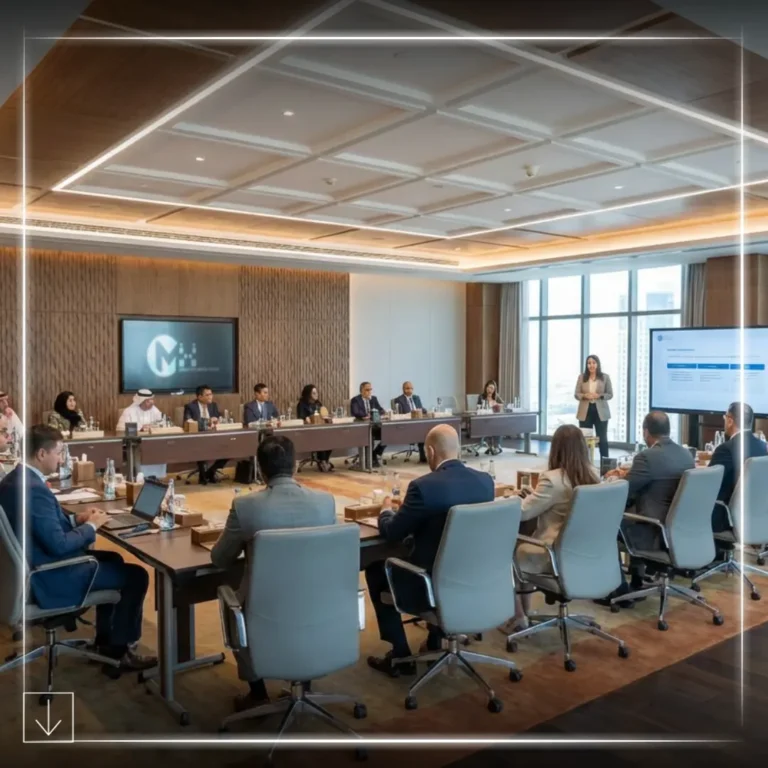What are the 10 steps to plan an event?
Playing a pivotal role in nurturing networks, corporate events are the perfect gateway strategy to uplift morale and achieve business objectives. Ranging from an array of event formats such as conferences, seminars, product launches, and team-building retreats, when hosting corporate events, expect meticulous attention to detail to align your event with effective execution and success. Moving through the comprehensive guide, we will delve into the 10 crucial steps to communicating effective event objectives, providing a detailed roadmap to steer through the complexities that a corporate event planner faces.
Also Read: 10 Inspiring Corporate Event Ideas
1. Define Objectives
A corporate event planner feel the key to a successful corporate event lies in having specific, well-defined goals. What are your aims? Whether it’s boosting brand visibility, introducing a new product, promoting teamwork, or connecting with industry experts, your objectives will shape every part of your event planning.
To define your objectives effectively, consider asking yourself the following questions:
· What is the main objective of this event? Clearly define the goal, whether it’s about raising brand recognition, introducing a new product, creating networking opportunities, or commemorating company milestones.
· Who are you hoping to see at this event? Tell us about the kind of people you want to attract – their age, interests, and what they like.
· What do I specifically want to accomplish with this event? Let’s pinpoint the exact results you’re aiming for – whether it’s about finding potential leads, fostering strong connections, educating the attendees, motivating them to act, or boosting revenue.
· How will we assess the event’s success? We should establish measurable key performance indicators (KPIs) to track its effectiveness, such as attendance numbers, engagement metrics, sales conversions, or post-event feedback. This will help us evaluate how well the event performed.
2. Set a Budget
Once you’ve outlined your objectives, it’s crucial to establish a realistic budget. This involves a comprehensive assessment of all potential expenses, including venue rental, catering, audiovisual equipment, marketing materials, and staff costs. Setting a budget early on allows for informed decision-making and prioritization of spending, ensuring that resources are allocated efficiently to align with your goals.
When planning your budget make sure to take into account the following;
· Expenses, for the venue which should cover fees as well as setup and teardown costs.
· Catering expenses, including provisions for food, beverages, and any specific dietary needs.
· Costs associated with equipment, such as microphones, projectors, screens, and technical assistance.
· Budget for marketing materials like brochures, banners, and promotional items that involve design and printing expenses.
· Wages, for event staff members, security personnel, and any other necessary individuals.
3. Develop a Timeline
It’s crucial to have a schedule in place to stay organized with your event planning. Begin by pinpointing milestones like reserving the location, confirming vendors, sending out invites, and sorting out all the details. Break down these tasks into manageable deadlines to ensure everything is completed smoothly and efficiently.
A well-structured timeline should include:
· Initial Planning: Define objectives, set a budget, and create a project plan.
· Pre-Event Preparation: Book venue, secure vendors, and begin marketing efforts.
· Promotion Phase: Send invitations, run promotional campaigns, and confirm attendee numbers.
· Final Preparations: Confirm logistics, conduct site visits, and brief the event team.
· Event Day: Execute the plan, monitor activities, and address any issues that arise.
· Post-Event Follow-Up: Evaluate success, gather feedback, and send thank-you notes.
4. Identify Target Audience
Understanding your target audience is fundamental to customizing your event to align with their specific needs and interests. Analyze demographic details such as age, gender, and occupation, alongside interests, preferences, and prevailing industry trends to curate your guest list and programming effectively.
Tailor your invitations and promotional materials to resonate with your target audience by using language, imagery, and messaging that strikes a chord with their sensibilities. Personalizing every aspect of the event experience, from initial outreach to onsite engagement, not only enhances attendee engagement but also maximizes attendance, ensuring your event achieves its intended impact and objectives.
5. Plan Engaging Content and Activities
A corporate event planner creates engaging content and activities, which are crucial for keeping attendees interested and enthusiastic throughout your corporate event. Consider incorporating a mix of keynote speakers, panel discussions, workshops, networking sessions, and interactive experiences that align with your event objectives and appeal to your audience.
Key Elements to Consider:
· Keynote Speakers: Choose influential and relevant speakers who can provide valuable insights and inspire your audience.
· Panel Discussions: Facilitate discussions on pertinent topics with industry experts.
· Workshops: Offer hands-on sessions where attendees can learn new skills or gain deeper insights into specific subjects.
· Networking Sessions: Create opportunities for attendees to connect and build relationships.
· Interactive Experiences: Include activities like live polls, Q&A sessions, and interactive displays to keep the audience engaged.
6. Arrange Logistics and Resources
Paying meticulous attention to logistical details is essential for ensuring a seamless event experience. Delegating responsibilities to a capable team and conducting thorough site visits can help address any potential challenges.
Key logistical considerations include:
· Transportation: Arrange for shuttle services, parking, and travel accommodations.
· Accommodation: Book hotels and ensure that accommodation details are communicated clearly to attendees.
· Catering: Plan menus that cater to all dietary requirements and ensure timely delivery and setup.
· Audiovisual Equipment: Test all equipment in advance to avoid technical issues during the event.
· Signage: Ensure clear and effective signage to guide attendees throughout the venue.
· Seating Arrangements: Plan seating to facilitate engagement and comfort.
7. Promote Your Event
Effective promotion is critical for driving attendance and generating excitement around your corporate event. Highlight unique selling points, key speakers, and exclusive experiences to entice potential attendees.
Promotional Strategies:
· Social Media: Use platforms like LinkedIn, Twitter, Facebook, and Instagram to reach a broader audience.
· Email Campaigns: Send personalized invitations and regular updates to your mailing list.
· Press Releases: Announce your event through press releases to gain media coverage.
· Targeted Advertising: Use online ads to target specific demographics and interests.
· Influencer Partnerships: Collaborate with industry influencers to promote your event.
8. Execute and Monitor the Event
On the day of the event, focus on executing your plan with precision and professionalism. Ensure all staff members are briefed on their roles and responsibilities, and maintain open lines of communication throughout the event. Monitor attendee engagement, address any issues promptly, and adapt as necessary to ensure a memorable experience for all participants.
Execution Tips:
· Staff Briefings: Conduct thorough briefings to ensure everyone knows their duties.
· Real-Time Monitoring: Use tools and apps to track attendance, engagement, and feedback.
· Issue Resolution: Have a contingency plan for unexpected challenges.
· Communication: Keep communication lines open between the planning team and event staff.
9. Evaluate and Follow Up
Once the event is over, make sure to assess how well it met your goals. Solicit feedback from attendees, sponsors, and stakeholders to identify strengths, areas for improvement, and opportunities for future events.
Evaluation Methods:
· Surveys: Send post-event surveys to gather attendee feedback.
· Data Analysis: Analyze engagement metrics, attendance numbers, and other KPIs.
· Feedback Sessions: Hold debriefing sessions with your team and stakeholders.
· Thank-You Messages: Send personalized thank-you notes to attendees and sponsors.
10. Extensive Marketing
To ensure that your event is well-attended and that all the planning effort is worthwhile, extensive marketing is essential. Use all channels through which you can best reach your target group.
Marketing Channels:
· Internal Employee Events: Use company notices, and announcements via newsletters, email invitations, and ask managers to mention the event in team meetings to spread the word.
· Commercial Events: Utilize targeted advertising via social media platforms, advertisements in relevant magazines, and a reference on your own website.
· Specific Events: For art exhibitions, use posters, flyers, press releases, and listings in art and culture magazines.
By following these steps with precision and insight, you’ll be well-equipped to navigate the complexities of corporate event planning and ensure your event achieves its intended impact and objectives. Whether you’re organizing a small team-building retreat, or a large-scale conference, meticulous planning and strategic execution are key to delivering a successful and memorable corporate event. Connect with us at www.creativemediahouse.com to learn more about crafting successful corporate events.
FAQs
Request Proposal
Thank You!
Our team will get in touch with your shortly



